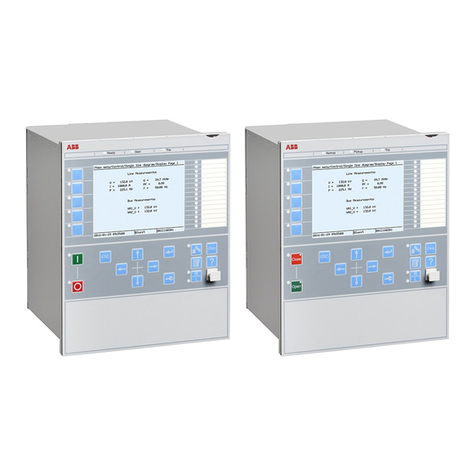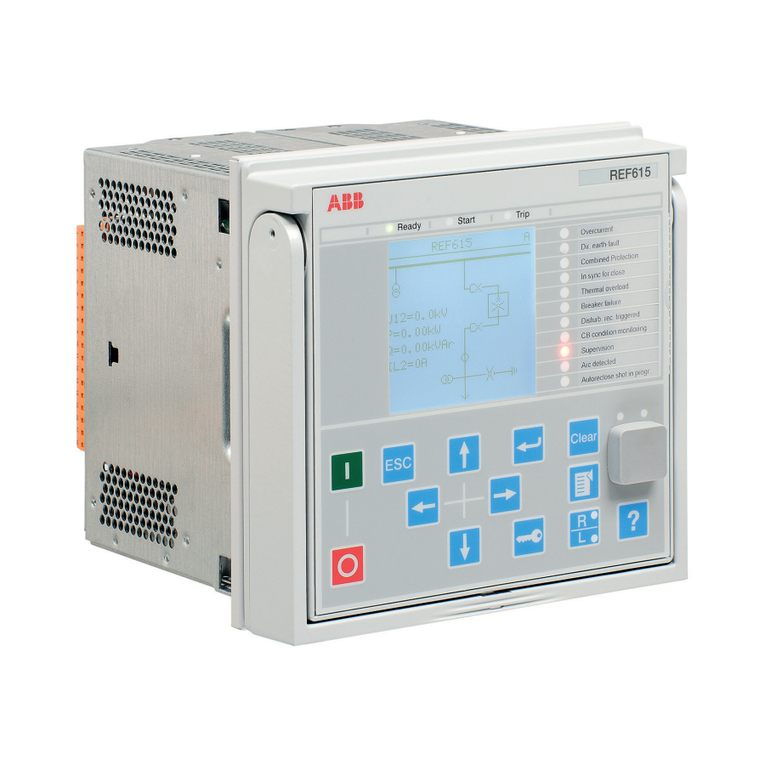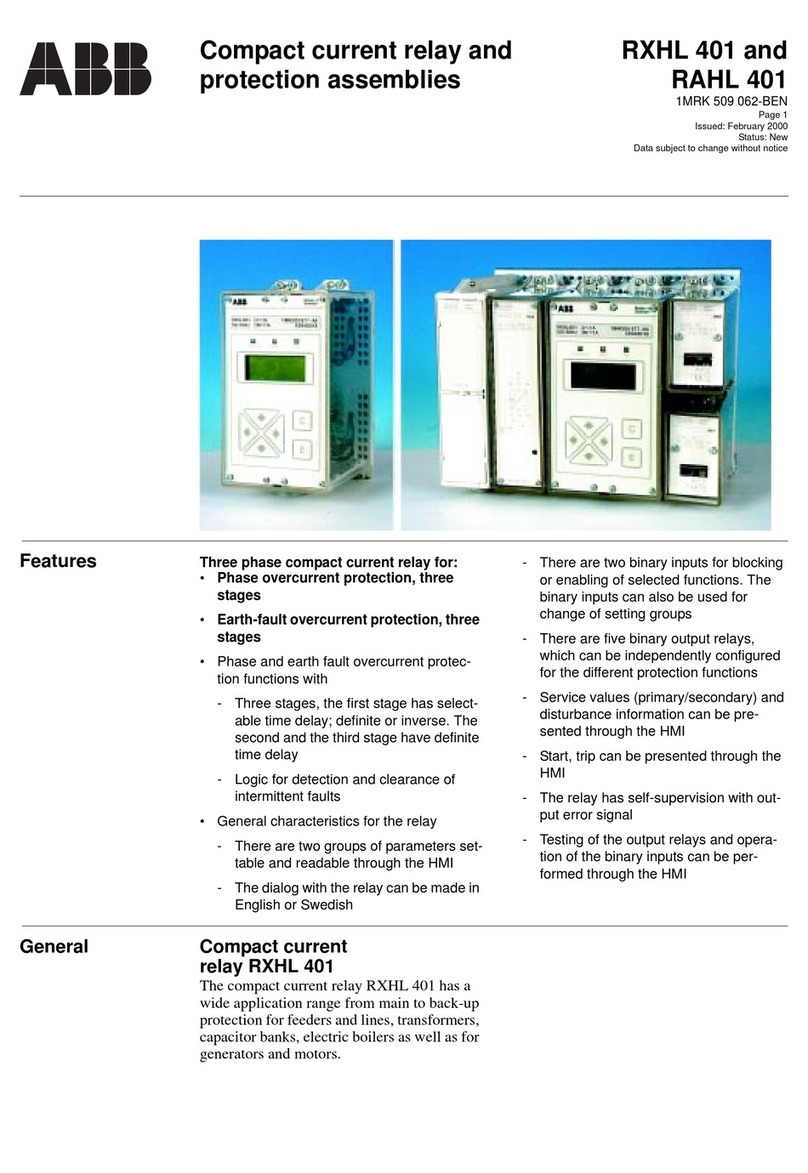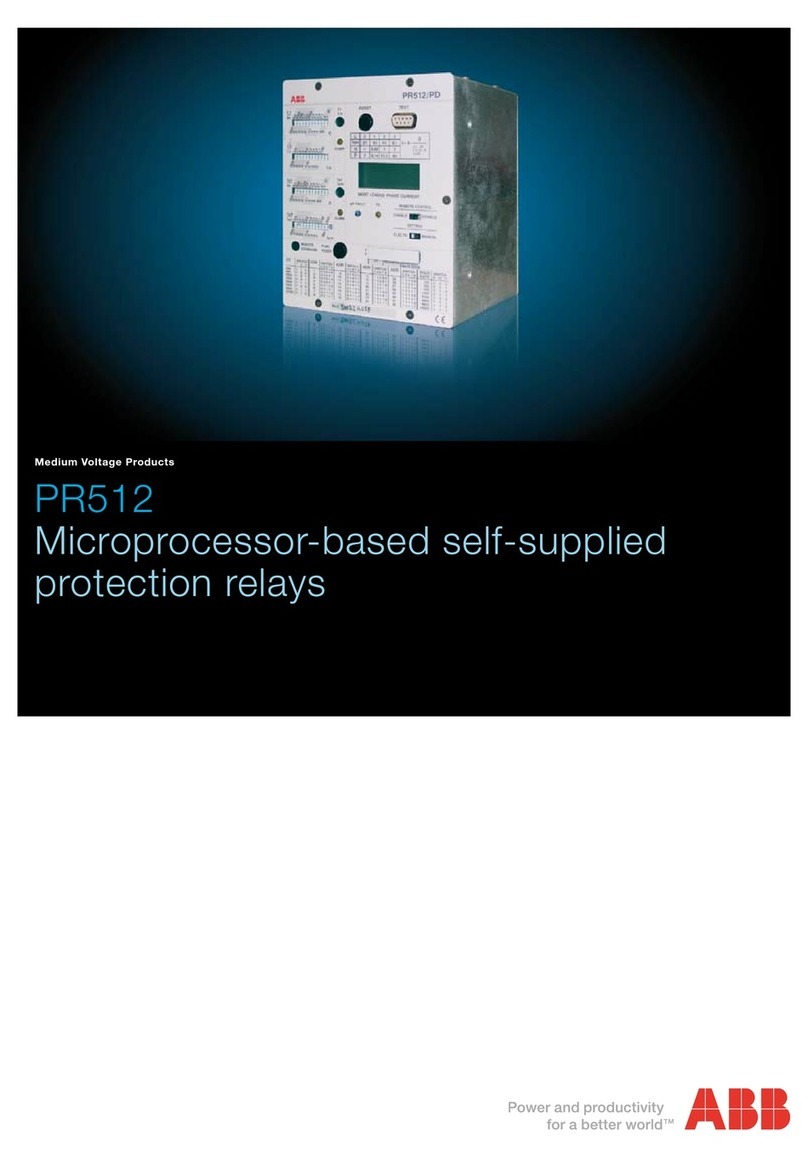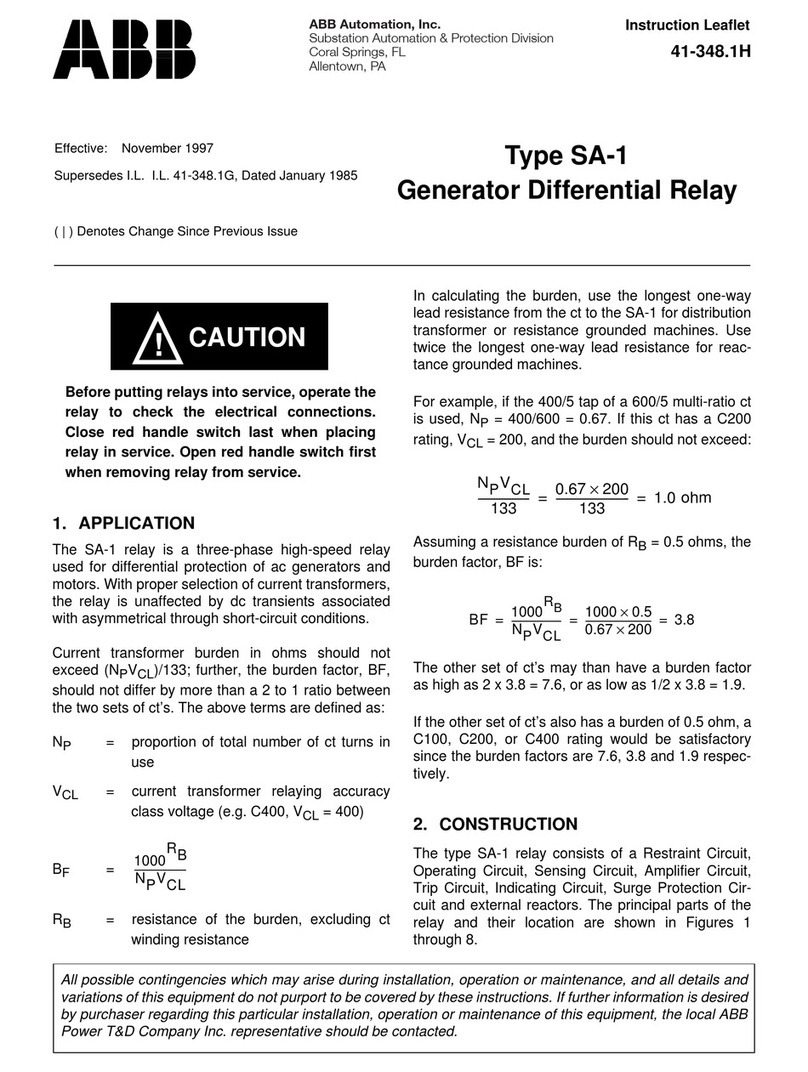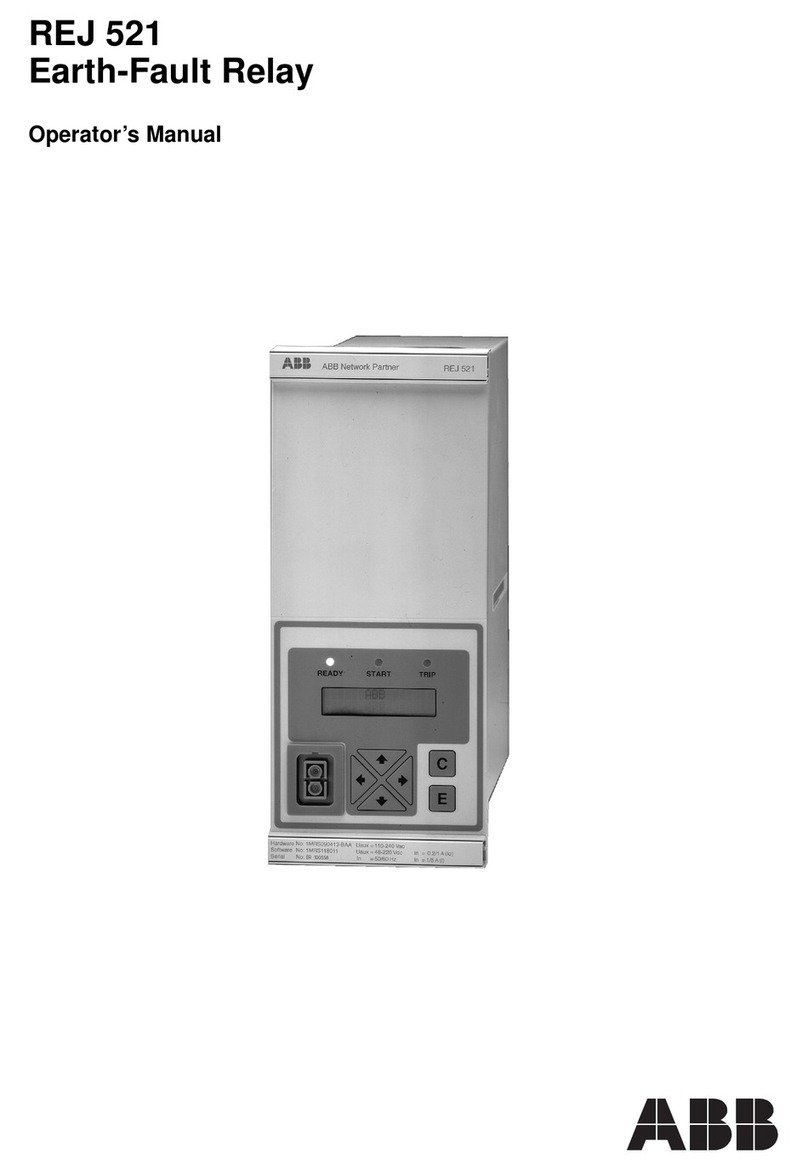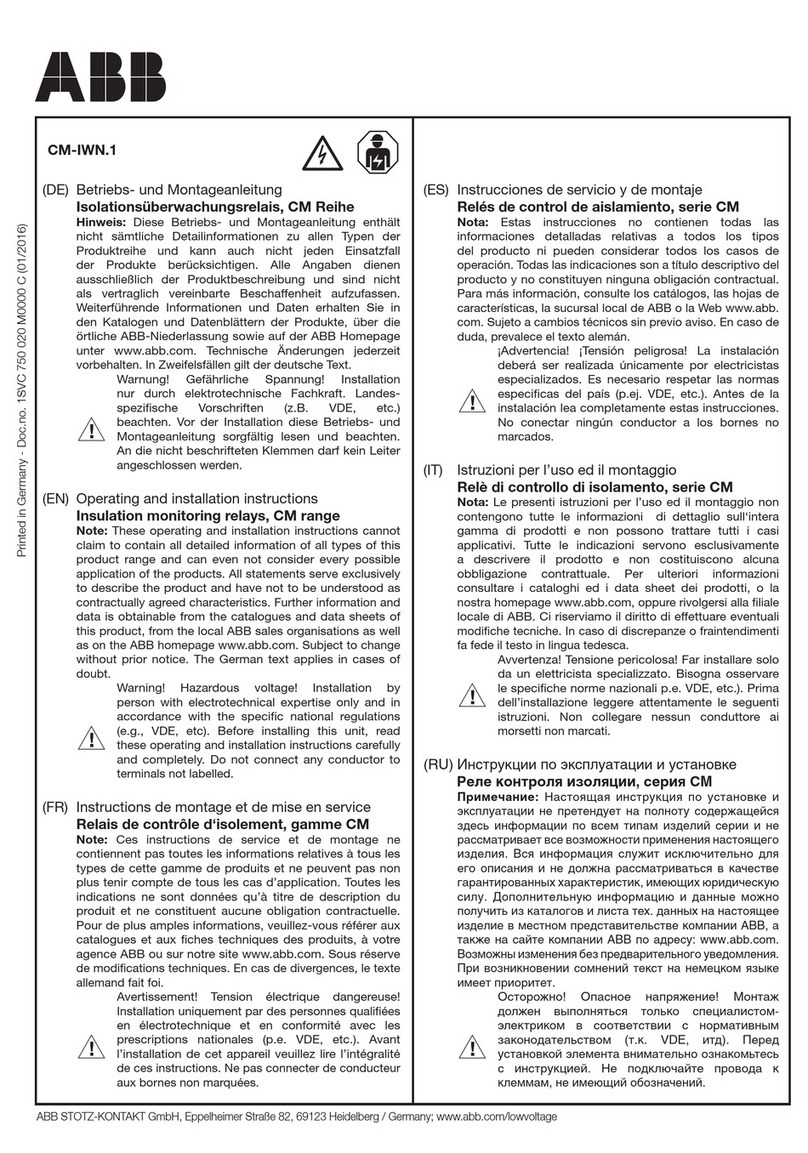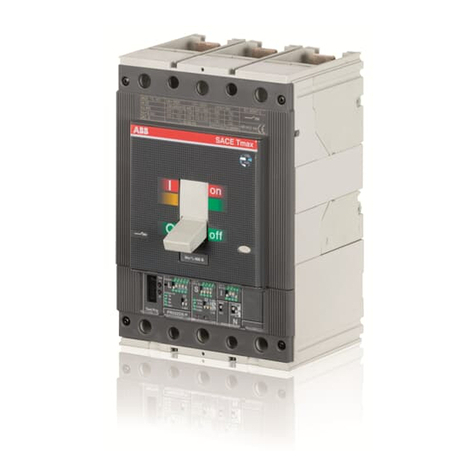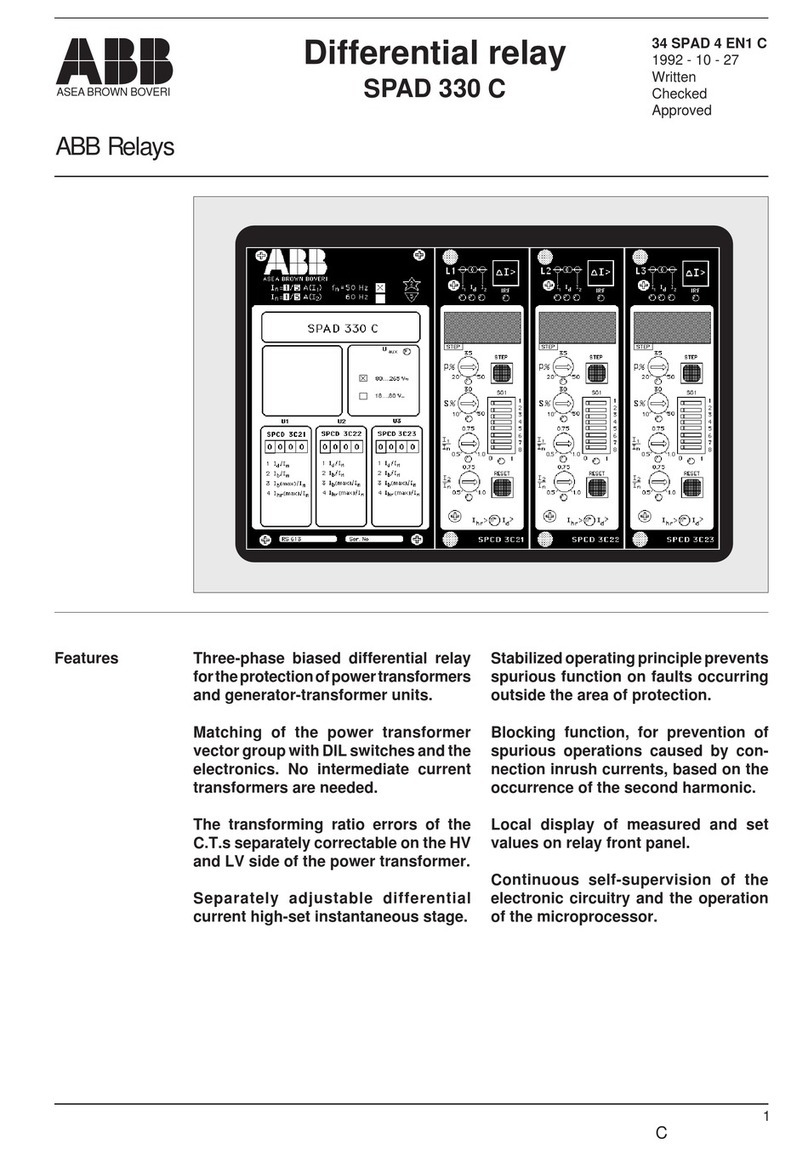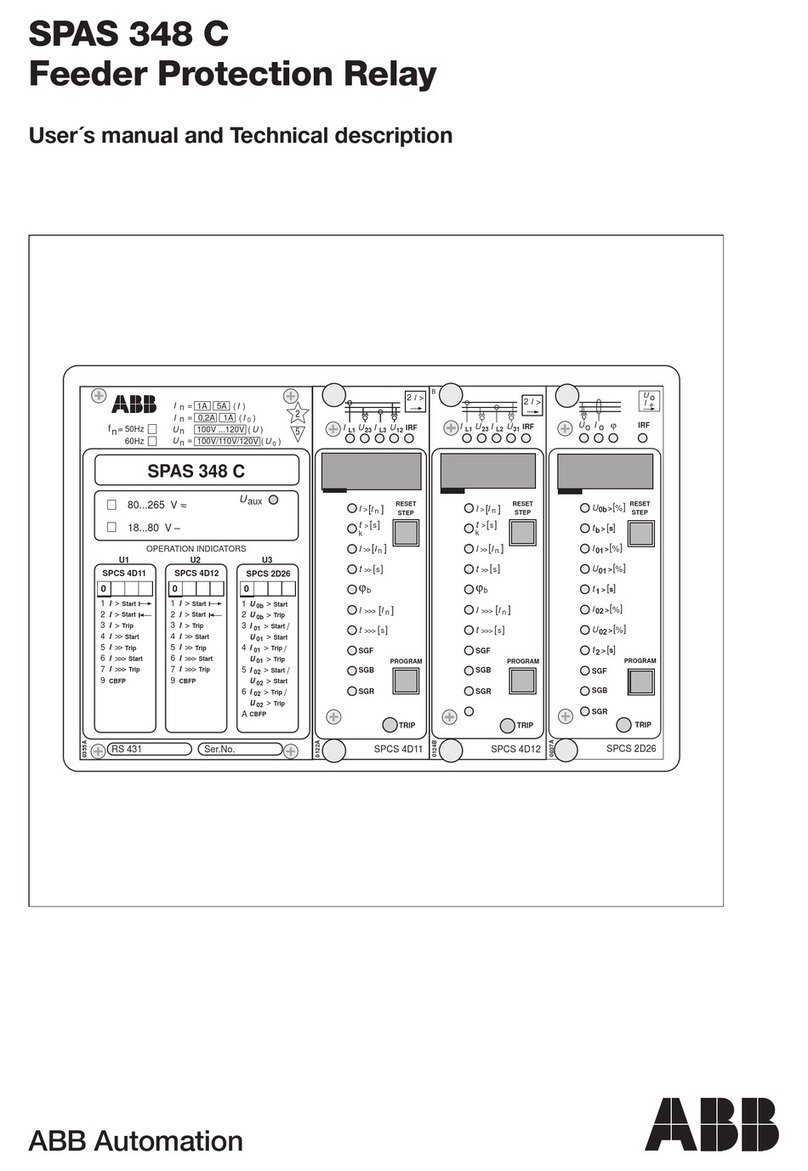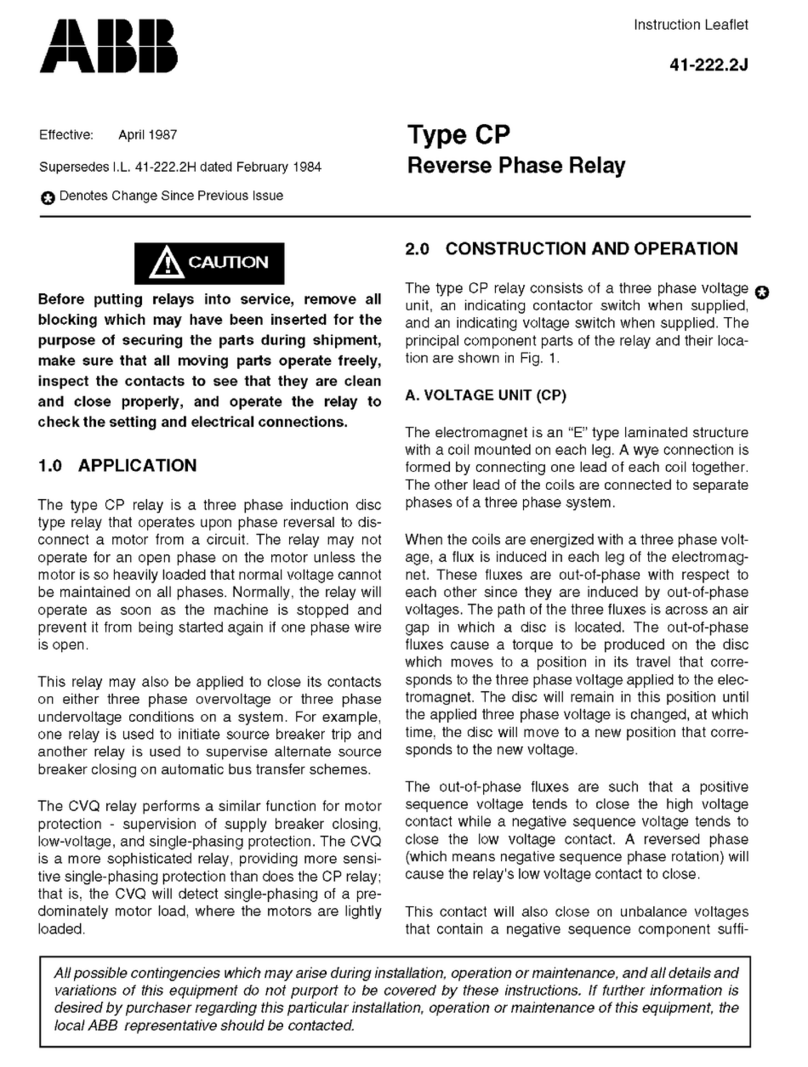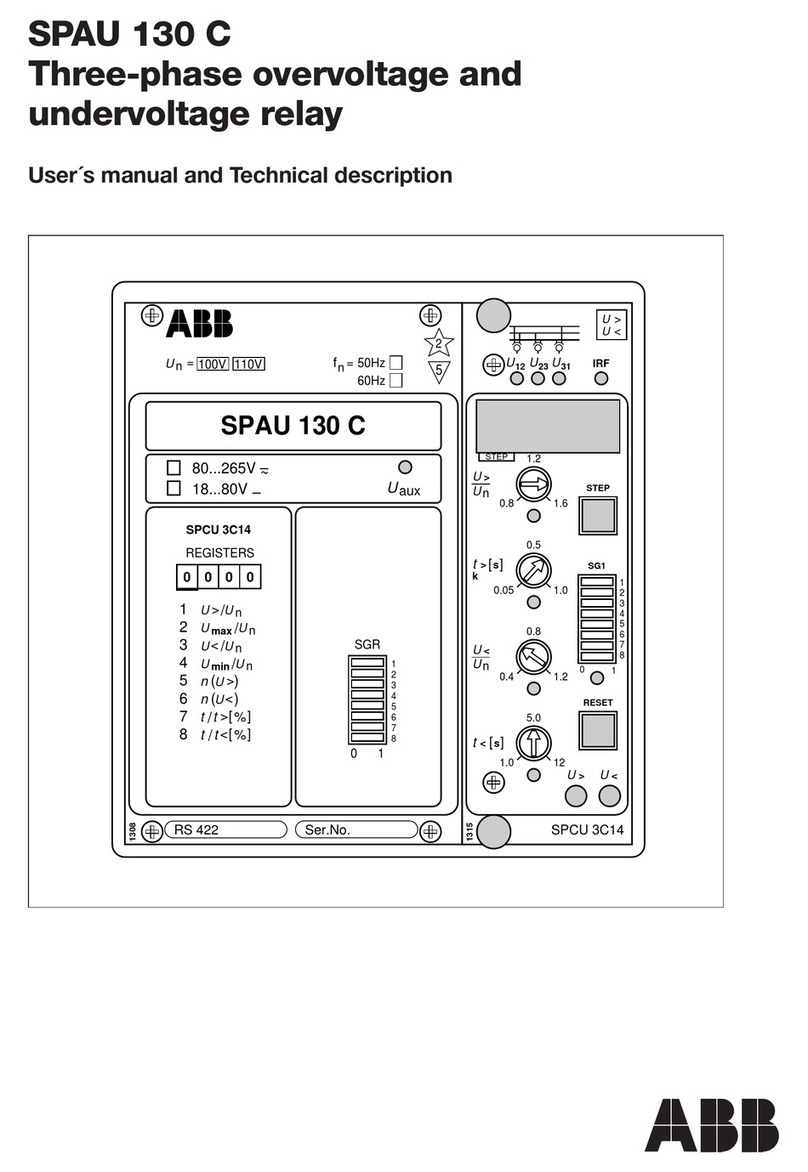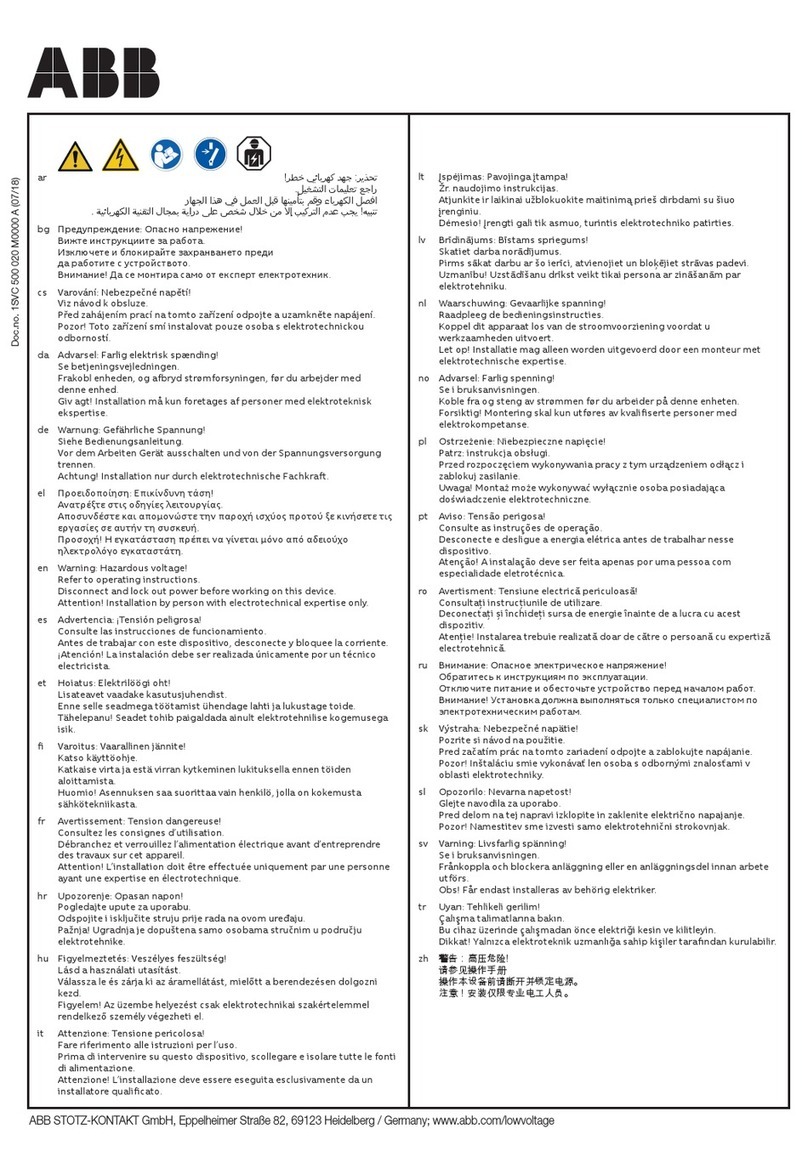
I.L. 41-490H
3
bridge. The electromagnet is permanently secured
to the frame and cannot be separated from the
frame.
The moving element assembly consists of a spiral
spring, contact carrying member, and an aluminum
cylinder assembled to a molded hub which holds the
shaft. The hub to which the moving contact arm is
clamped has a wedge-and-cam construction, to pro-
vide low-bounce contact action. A casual inspection
of the assembly might lead one to think that the con-
tact arm bracket does not clamp on the hub as tightly
as it should. However, this adjustment is accurately
made at the factory and is locked in place with a lock
nut and should not be changed.
The shaft has removable top and bottom jewel bear-
ings. The shaft rides between the bottom pin bearing
and the upper pin bearing which is adjusted to .025
inch from the top of the shaft bearing. The cylinder
rotates in an air gap formed by the electromagnet
and the magnetic core.
The bridge is secured to the electromagnet and the
frame by two mounting screws. In addition to holding
the upper pin bearing, the bridge is used for mount-
ing the adjustable stationary contact housing. This
stationary contact has .0015 to .0035 inch follow
which is set at the factory by means of the adjusting
screw. After the adjustment is made the screw is
sealed in position with a material which flows around
the threads and then solidifies. The stationary con-
tact housing is held in position by a spring type
clamp. The spring adjuster is located on the under-
side of the bridge and is attached to the moving con-
tact arm by a spiral spring. The spring adjuster is
also held in place by a spring type clamp.
The main contact of KD-10 and KD-11 relays will
close 30 amp at 250 Vdc and the seal-in contact of
the indicating contactor switch will carry this current
long enough to trip a breaker.
When the contacts close, the electrical connection is
made through the stationary contact housing clamp,
to the moving contact, through the spiral spring and
out to the spring adjuster clamp.
2.4 Indicating Contactor Switch Unit (ICS)
The indicating contactor switch is a small dc operat-
ed clapper type device. A magnetic armature, to
which leaf-spring mounted contacts are attached, is
attracted to the magnetic core upon energization of
the switch. When the switch closes, the moving con-
tacts bridge two stationary contacts, completing the
trip circuit. Also during this operation two fingers on
the armature deflect a spring located on the front of
the switch, which allows the operation indicator tar-
get to drop. The target is reset from outside of the
case by a push rod located at the bottom of the cov-
er.
The front spring, in addition to holding the target,
provides restraint for the armature and thus controls
the pickup value of the switch.
3. OPERATION
The KD-10 relay has two major components: com-
pensators and tripping units. In the internal schemat-
ic of Figure 4 the compensators are designated T,
TAB and TBC, the tripping units, Z (3φ) and Z (φφ).
The phase-to-phase unit, Z (φφ) operates for all
combinations of phase to phase faults (phase A-B,
B-C, and C-A). The 3-phase unit Z (3φ) operates for
3-phase faults and for close-in-two-phase-to-ground
faults, although most two-phase-to-ground faults are
cleared by operation of the phase-to-phase unit.
Each of the tripping units and its associated com-
pensator circuit are electrically separate, and will
now be considered successively.
3.1 Three-Phase Unit
A single compensator T has its primary energized
with (IA-3I0) current; 3I0is the residual current. (See
External Schematic, Figure 19.) There are three
compensators shown one for each of the three
zones. One connection uses an auxiliary 5:5 ratio
current transformer to insert the -310component.
The alternate connection supplies the compensator
primaries with (-IB-IC). Since IA+IB+IC= 3I0, (IA-3I0)
= (-IB-IC). Current IA, IBand ICare the phase cur-
rents. The 3I0current is needed to provide overlap
with the φφ unit on 2-phase-to-ground faults.
Accordingly, the alternate connection is equivalent
to the first arrangement. Note that relay 21-3, a type
KD-11, also has a current winding Z. This winding is
wound on the tripping unit so that the R-X diagram
circle includes the origin, as explained under Section
4, Characteristics.
Courtesy of NationalSwitchgear.com
